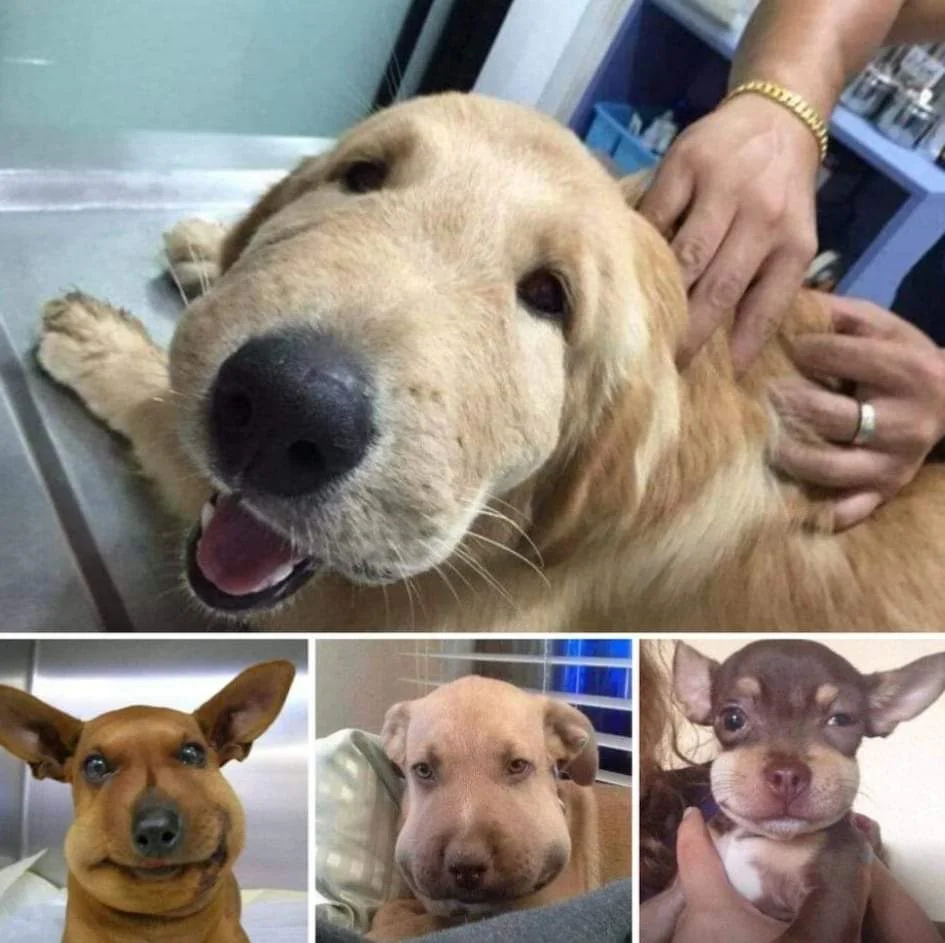Enjoying the outdoors with your dog can be one of the most relaxing activities for both of you. Keeping it that way can sometimes be difficult. An example is stopping your dog from following the buzz.
Do you know what to do in case your dog eats a bee?
The sting: a defense mechanism in bees
Dogs are curious. They tend to explore the world around them by sniffing, licking and clawing. Once something moves in their environment, they have to stick their nose in — literally.
Bees are industrious pollinators and will likely find this encounter extremely destructive and will use their stings to protect themselves. A bite in your dog’s mouth is nothing to worry about — unless your dog has an allergic reaction.

It will deal with crying, whimpering and swelling. There is nothing you can’t treat with a veterinarian’s advice and prescription.
If your dog shows signs of more seriousness, especially difficulty breathing, immediate medical attention is required.
The sting is dangerous
Eating bees will not harm your dog. Dogs have no problem digesting insects. What happens before your dog swallows the bees can cause serious problems.
Bees are poisonous – we are not affected by touching or eating them, but instead are injected with venom when the bees sting us.
While humans rarely accidentally swallow a bee, that’s not the case with our four-legged companions. The dog’s tongue or throat can be bitten. Swelling and airway obstruction are possible. This is especially serious for small dogs with short noses and flat faces.
If your dog is bitten in the mouth or throat, it is recommended that you seek immediate veterinary help.
What to do if your dog is stung by a bee?
To avoid a life-threatening situation, it is necessary to pay attention to your dog’s appearance and behavior immediately after swallowing a bee. Each reaction becomes visible within minutes.
In mild cases, signs of swelling may appear around the infected area. Your dog may also try to lick or chew the wound – bee stings can be very painful for dogs.
To help – try using soothing sounds and movements. Looking for swelling, carefully examine your dog’s head and face, as well as the inside of his mouth. Multiple stings can swell quickly.
If you notice a stinger, try to remove it, but don’t bury it any deeper – this will inject more venom into the wound. If possible, use a card-like object to gently scrape the spike away from the skin—avoid pulling or pushing it. If you’re uncomfortable with this, leave it to your veterinarian to try it before it becomes worse.
If you don’t see any other signs of an allergic reaction and your dog is breathing normally, ask your veterinarian what medication to use. Keep watching and comforting your furry friend.
Don’t underestimate the power of poison. An allergic reaction may still occur hours after the sting.
How to recognize anaphylactic shock
Some dogs have a strong allergic reaction to bee stings. It is called anaphylaxis (anaphylaxis). Recognizing the symptoms can help you save your dog’s life. If you notice any of these signs immediately after a dog bite, go straight to an emergency veterinarian.
- Heavy breathing
- Drooling, vomiting or diarrhea
- Defecation or urination
- Hives on the face and neck area
If you weren’t there when the sting happened, your dog may have entered stage two by the time you found him. These include:
- Lethargy and weakness
- Pale gums
- Irregular heartbeat
- Severe shortness of breath
- Weak pulse
- Cold limbs
- Shock or even coma
These symptoms can develop quickly, and without medical attention, your dog’s life can be seriously threatened.
Epinephrine (adrenaline) is the most commonly used. Additional treatment with antihistamines, corticosteroids, and bronchodilators is used only when necessary. For acute respiratory problems, a veterinarian may decide to protect the dog’s airway by using a special tube to help the dog breathe.
How to Reduce Your Risk of Bee Stings
You can never make your dog 100% safe – bees are buzzing everywhere. However, there are ways to reduce the risk.
Avoid places where bees congregate. Some bees, like bumblebees, build their nests underground, while carpenter bees prefer areas where trees are cut down. Wild bees that nest in and around treetops are more common.
Another option is to walk the dog on a leash. You can find leads long enough to let them snoop around freely and still have full control when you anticipate problems.
First aid kit for your dog
First, consult your veterinarian about emergency treatment for an allergic reaction — especially if your dog is allergic to bee stings.
One option recommended by experts is an auto-injector – your veterinarian can prescribe and give you detailed instructions on the correct dosage for your dog.
The other is an antihistamine that contains only diphenhydramine as the active ingredient. This medication is available in liquid form or in pill form. Consult your veterinarian to determine dosage.
Both options are great first aid, but don’t hesitate to seek veterinary help in the event of a severe allergic reaction.
Treating Bee Stings with Natural Remedies
Ice
The easiest way to help your dog is to use a cold compress. Take an ice pack and wrap it in a soft cloth. Place it gently on the affected area to avoid further pain to your dog. Repeat this for at least an hour.
Vinegar
Apply apple cider vinegar to a bandage or cotton ball and use it to cover the sore spot. Due to its acidity, this vinegar helps neutralize bee venom. Change it regularly, but be careful not to get the bandage too close to the dog’s eyes.
Baking soda
If you find it easier to use cream, make a paste by mixing three parts baking soda with one part water. Apply it to the swelling every two hours throughout the day, making sure your dog doesn’t lick it off.
Aloe Vera
If you have this plant at home, cut off a leaf and use freshly squeezed gel. Apply it to the swelling like a cream of baking soda. When using any product, make sure to only use pure Aloe Vera gel with no other ingredients.
Honey
Honey is often used to help our pets with superficial damage – dab some on the painful area. It reduces itching and pain and speeds up the healing process of the skin. After application, cover with a bandage and leave on for an hour.
Do not panic
Regardless of whether your dog is allergic or not, stay calm if a bee stings him. You need to focus on locating the affected area and monitoring your dog for signs of a reaction.
When your dog has breathing problems, you will benefit most if you approach him calmly and take him to the vet as stress-free as possible. Your most important job is to comfort your dog while the specialist does the work and treats him.

